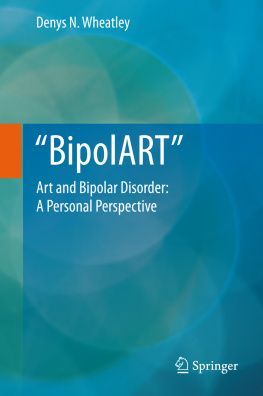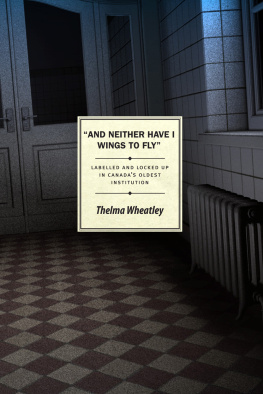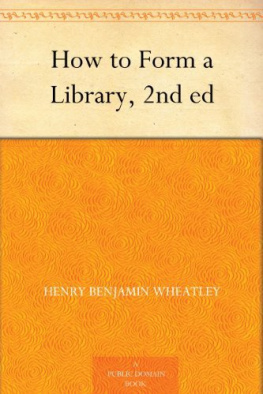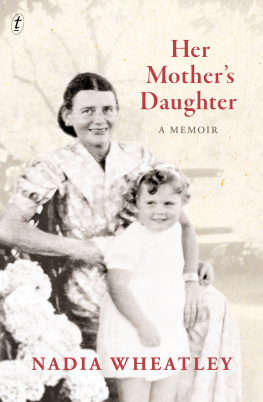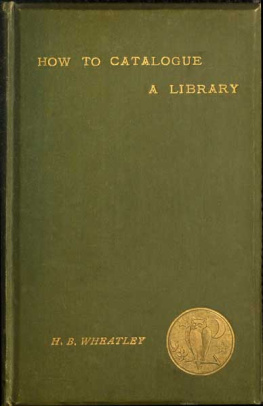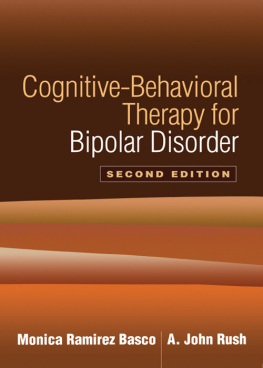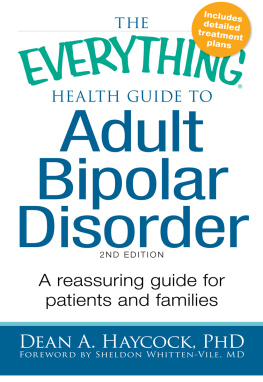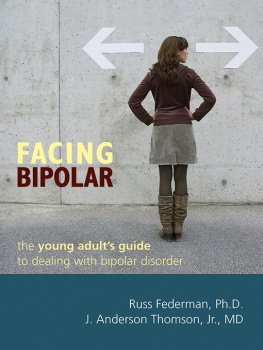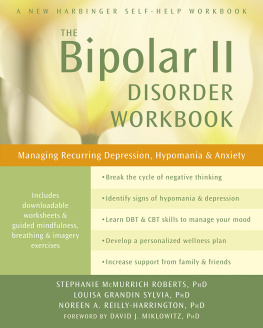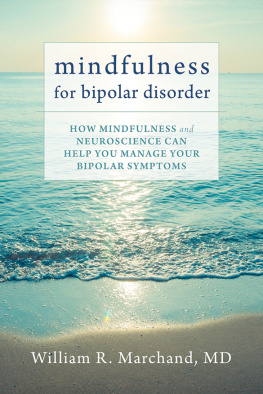Denys N. Wheatley BipolART 2012 Art and Bipolar Disorder: A Personal Perspective 10.1007/978-94-007-4872-9_1 Springer Science+Business Media Dordrecht 2012
1. PrologueBy Way of an Introduction
No excellent soul is exempt from a mixture of madness .
(Aristotle)
It was not my original intention to say much up-front about what follows in the chapters of this book that are filled with artwork. The content should hopefully speak for itself, with a few short interjections helping to set the scene, or providing an apt quotation. The idea had been to let you wander through the gallery (the chapters of this book) first, and then for me to make some remarks about artwork and its therapeutic value in bipolar disorder, as well as a little about myself, in the Epilogue.
But the gallery needs some introduction, even if something about the person (personality ) behind them is left until later. The artwork is an eclectic mixture of two-dimensional art produced over the last 1213 years, although this is not the only phase during my life that manic-depression (bipolar disorder) has loomed large. The original idea of setting these works out in chronological order had to be abandoned since it proved better to collect them into groups, as can be seen from the chapter headings in the Contents, but deciding which picture went where was often difficult. Nevertheless I hope their presentation in this way works well.
There are simple pencil doodles in Chapter . There is no doubt that doodles are almost always abstract, although many will contain images that are recognisable . Doodles in the last few years have, on average, become larger, as well as being more elaborate and stylised than before, a kind of new genre.
Some doodles have led to major paintings, although others were done without first drawing a doodle. A common motif can be seen in the many of the life-forms depicted in the early doodles, and therefore I have selected those which emphasis this aspect in Chapter is on reality . A variety of different media have been used, and with them I have tried my hand at more conventional subjects (landscapes, buildings, people and flowers).
I also have a musical background and now live with a professional violinist. Since Jean and I got together, this has led to some doodles and paintings over the last 7 years that intentionally have a distinctly musical theme, giving me some relief and pleasure in doing something for someone very special as part of Art Therapy you might even call it Music Therapy because we also play music together (Chapter ).
Chapter ). I have been interested in geometry to the point of obsession for many years, and in it triangles , circles , and spheres predominate. It is noteworthy that the ideals of Plato were spheres and triangles , so there is something very basic about them, and perhaps this may reflect quite considerably on my nature.
When not that depressed and in a more euthymic phase , I will be laughing, punning, cracking jokes and generally interacting comfortably with everyone else. A long time ago I became deeply interested in an exceedingly small and beautiful biological structure that can only be examined at the level of the electron microscope, called a centriole . It has a triplet tubular structure with a quasi 9-fold symmetry ; it is sometimes referred to as a pinwheel. On many occasions I have played with this natural design and tried to make humorous variations upon it. This has led to about 7080 different variations on the basic structure, of which a selection is shown of some of the more amusing ones in Chapter . Many of them were done to pass the time on, for example, long-haul flightsperhaps to divert the mind from the work that had just been undertaken abroad (and perhaps a preventive against a possible lapse into depression on arriving home exhausted?). Doing this special type of doodling has always been fun, and a relief.
Chapter 11 is the Epilogue in which I will discuss mostly my personal views on the nature of bipolar as I see it, how I have felt and what impact this condition has overall on my life (and the life of others). The value of doing, be it craft, music , gardening, etc., during depression is vitally important to recovery, and as I indicate from recent experience, it can also act in a preventive manner. I trust this will be of sufficient interest to help understand the condition, my dilemmas with it and what my art work might mean. Art cannot do other than express both conscious and subconscious feeling and images. I tend to think in pictures and therefore it is quite natural for me to express myself in this way.
A Little Background
While I was interested in art from a very young age , it was never going to be my career. Apart from a couple of courses lasting no more than a few hours or a day, I have received no formal training in art since leaving school. Being an inquisitive youngster, a passion for discovery eventually led me into a scientific career. Occasionally I enjoyed dabbling in art during a life-times career in cancer research , but these turned out to be few and far between. The intensity and competitiveness of funding a busy research facility leaves little time (and energy) to pursue other activities.
At school in the 1950s, we were given the iniquitous choice between art and science streaming, which meant there was little development of my artistic skills from the end of secondary 2 (about 13 years old). But scientists of my vintage were expected to draw innumerable specimens at school and university because of the natural history ethos of biological sciences that prevailed at that time. I found this relatively easy, and was good at memorising things, being fortunate enough to have something of an eidetic memory . This gave me a very useful talent in being able to draw something, for example, an animal such as a fox, from memory , and I have put this to good use in many of the my paintings and drawings.
I see no real division between Art and Science ; such distinctions are man-made, not natural. My opinion, also held by others, is that creativity has much the samealmost indefinablecharacter wherever you meet it. If any difference exists, it is principally in that artistic expression is more subjective , an individual activity (at least with regard to painting and drawing), and a rather solitary affair, whereas creativity in the scientist, whilst emanating from the individual, claims to be more objective and related to others indulging themselves in similar analytical pursuits of Nature and the Universe that requires team-work and consensus, more so today than ever before.
Accepting that the pictures herein are by an amateur artist, they are the products of creativity mainly during episodes of depression in bipolar disorder. However, many of the bigger ones, especially the paintings, were completed when emerging from the worst weeks of the deepest low. Interestingly, very few drawings or paintings were started during manic and more euthymic periods of bipolar there never seemed to be time to do so!

